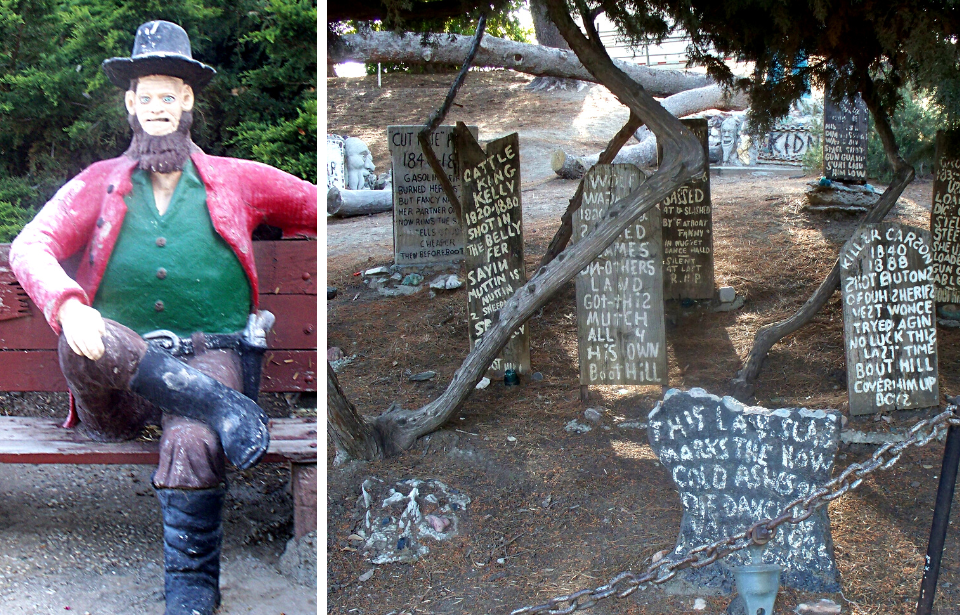The work of the late amateur sculptor John Ehn was once called “remarkable 20th century folk art” and displayed in a California Historic Landmark. However, as many of his pieces are now deemed offensive, Ehn’s descendants are struggling to find somewhere safe to keep them.
John Ehn started out as a trapper
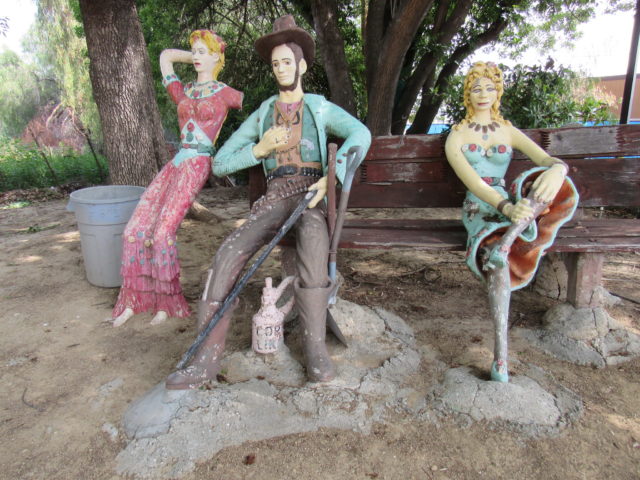
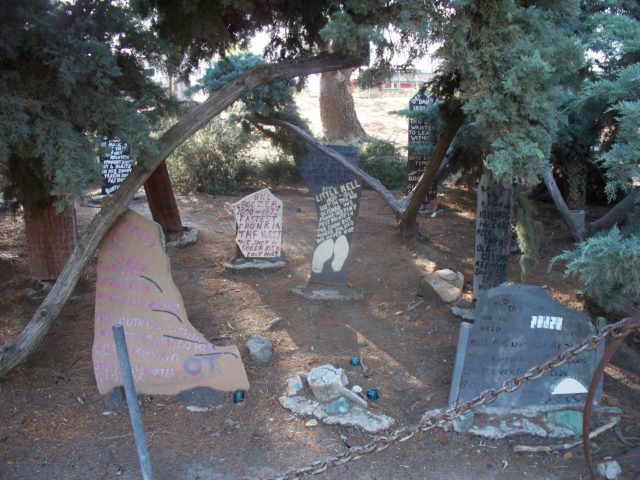
Johan “John” Henry Ehn was born in 1897 in a temporary lodging camp located near Viola, Michigan. He had to drop out of school in seventh grade to help care for his sick father and took on a job at a lumber mill. Eventually, Ehn went on to become an alligator and snake trapper after he and his family moved to Florida. This was a job he was extremely passionate about. Unfortunately, his trapping days would come to an end in 1940 after he suffered from spinal inflammation that prevented him from working.
Needing a career change, Ehn moved his family to Roscoe, California, where he opened a motel that paid homage to his previous job. Called “Old Trapper’s Lodge,” the theme motel was decorated with memorabilia and collections of trapper tools, guns, and animal skins. Ehn would dress up in trapper clothing to really sell the experience.
He picked up sculpting rather quickly
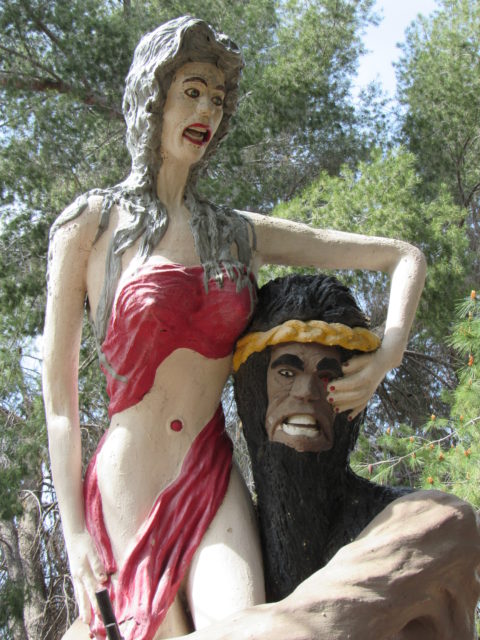
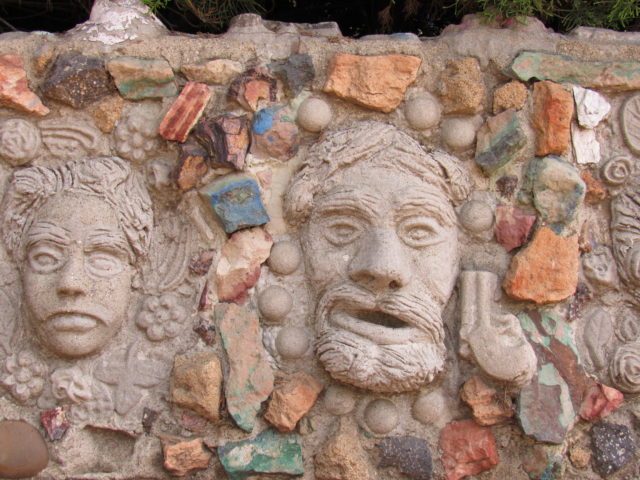
Ehn hired sculptor Claude Bell to create a giant concrete sculpture of himself as a trapper to place out in front of the motel. As he watched Bell work, he absorbed the techniques he observed and tried his own hand at sculpting. Ehn began sculpting by shaping strong wire into the likeness of a human body and covering it in cement. Then, when the cement had dried, he painted it in a variety of bright colors.
He started a collection of sculptures that were figures of his family members displayed as characters in famous folk stories and songs. His granddaughter, Marsha Klopfenstein, explained, “He put plaster of Paris on our faces and a straw in our mouth to [breathe].” He then used those lifelike masks to mold the faces onto the figures he was creating. Embedding materials like costume jewelry and stones into the wet concrete, he really brought the sculptures to life.
Over the years, Ehn created more than 20 sculptures and built two series he called “Boot Hill Cemetery” and “Old West Mooseum.” In the cemetery, tombstone epitaphs were placed in front of the sculptures that described the causes of death for all the characters. These were made with the help of a friend, but the sculptures were done solely by Ehn. He began the display in 1951 and they stayed there for over 20 years.
Old Trapper’s Lodge was declared a Historical Landmark
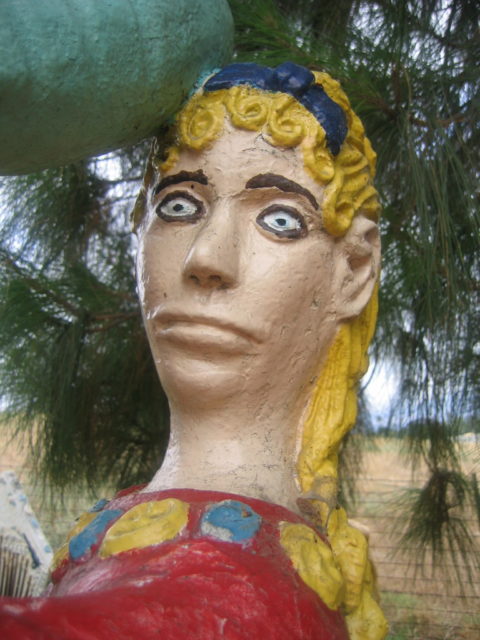
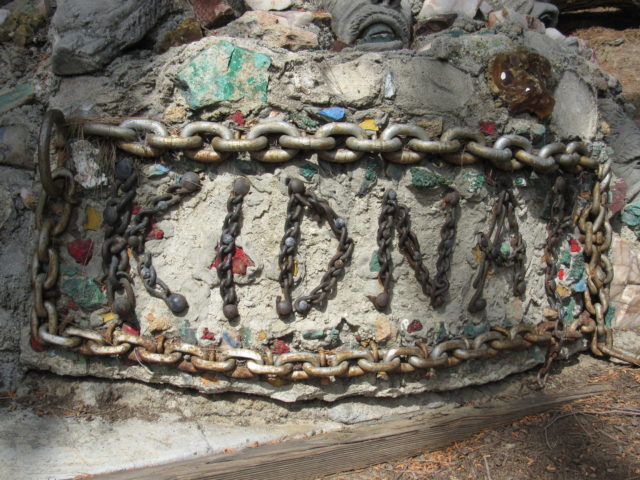
In 1981, Ehn passed away at the age of 84, but not before Old Trapper’s Lodge was declared a California State Historical Landmark. The California State Parks Office of Historic Preservation saw Ehn’s sculptures as an example of “remarkable 20th century folk art” and following his death, his children took over maintenance of the collection.
Unfortunately, by 1987, his heirs were unable to afford to keep the motel and ultimately had to sell the property to the Burbank-Glendale-Pasadena Airport Authority. Airport management wanted to expand the runways, so the motel buildings were slotted for demolition. Ehn’s daughter, Rosemarie Farish, wanted to preserve her father’s sculptures, so she enlisted the help of Seymour Rosen, a preservationist, and the Saving and Preservation Arts and Cultural Environments (SPACES) Foundation to help relocate the sculptures.
At one point, the Ehns’ sculptures were intended to be displayed by the Simi Valley Board of Education, but the agreement fell through because some of the figures were deemed offensive caricatures of the “Wild West.”
Pierce College volunteered to take the collection
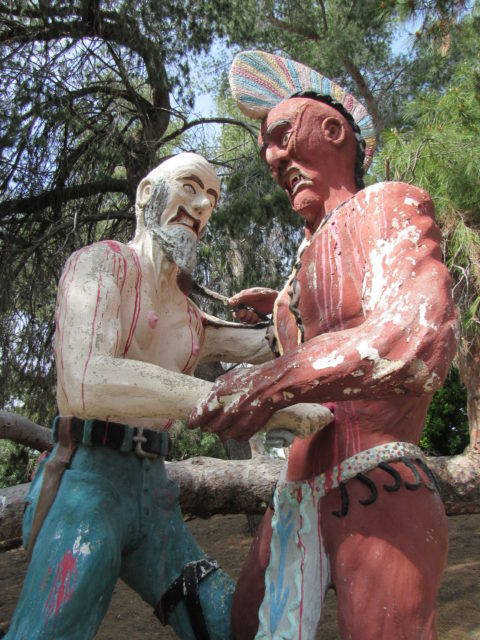
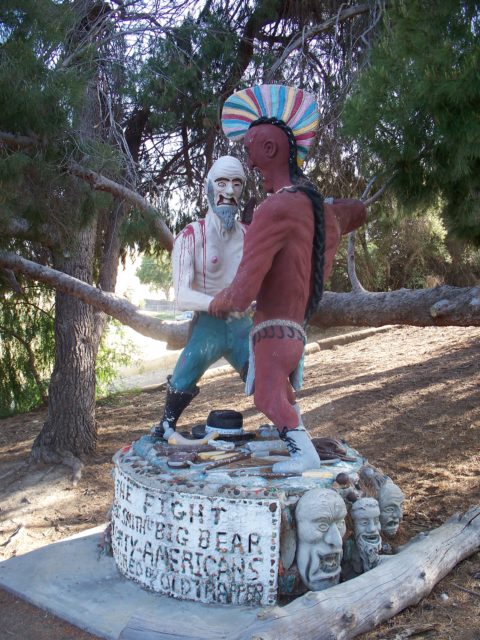
Instead, in 1988, Ehn’s sculptures were accepted by Pierce College. Then-president David Wolf agreed to take the collection and put it on display on the campus’s Alvin Cleveland Park. It’s a small part of the college’s campus, and for a long time the statues were not properly maintained – almost as though they were forgotten in that little corner of the college.
However, in 2020, it was unanimously decided by the executive board of the college system faculty guild that the collection of over 2o sculptures needed to be removed from the campus grounds. Faculty union president Brian Walsh said, “The statues are not representative of our values. We’re trying to tell a more complete picture—this knee-jerk, back-to-John-Wayne mode isn’t something we want to emphasize.”
One of the sculptures, “The Fight,” showcases two giant male figures, one white and one brown, engaged in conflict. They stand tall over a group of cowboys and working women, and the sculpture displays what the faculty consider to be harmful stereotypes. Since the decision was made to let them go, Pierce College has been eager to have them removed from campus. They worked with the Los Angeles Police Department to locate heirs of Ehns and gave them only 60 days to relocate the statues.
Relocation destroyed many of the sculptures
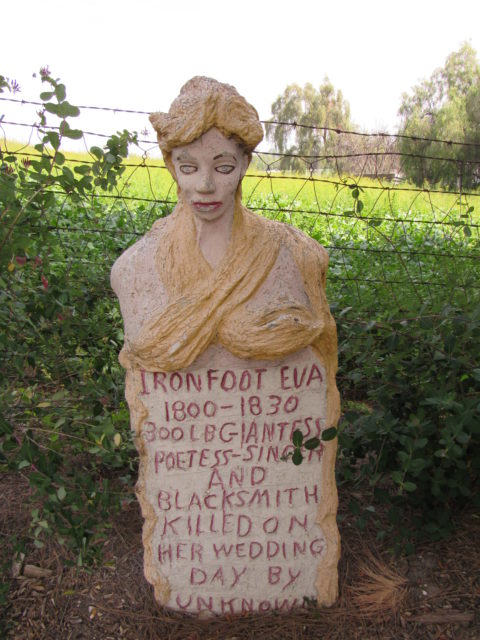
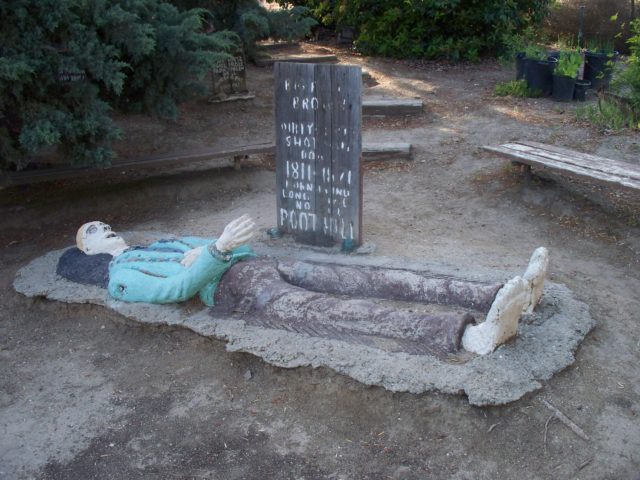
At first, they were shocked to hear that they were no longer wanted at Pierce College. “We thought it was forever,” said Linda Causey, one of Ehn’s heirs. “None of us ever imagined we’d ever hear about it again.” Several heirs worked together to try and come up with a solution to ensure the safety and preservation of their ancestor’s works of art.
They contacted local museums in the hopes of sourcing a new home for the collection. Eventually, they signed an agreement to release the collection to Valley Relics, a pop culture museum dedicated to the history of the San Fernando Valley. At their own expense, Valley Relics agreed to transport all of the sculptures.
The removal of the statues in 2020 was disastrous. When Ehn’s relatives returned to the “Boot Hill Cemetery” collection, they were shocked and disappointed by what they saw. “This is a skeleton of what was here,” Klopfenstein said. “It’s hard to know what was removed and to know, quite frankly, where it is.” They ultimately filed a cease-and-desist request to try and find another safe space to preserve Ehn’s artwork, and Valley Relics ended up backing out of their agreement.
More from us: Lester Became a Ghost Town When Its Last Resident Died at the Age of 99
Now, the sculptures remain at Pierce College while the heirs are still searching for their new home.
